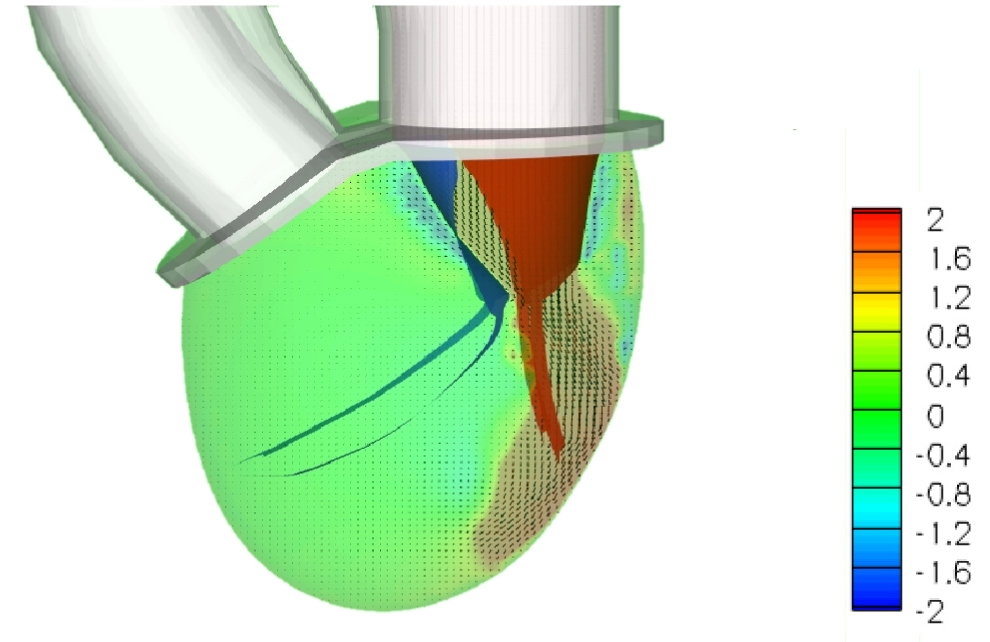EPJ E Highlight - The unsuspected synergistic mechanism of the human heart
- Details
- Published on 28 February 2018

3D simulations reveals that every part of the human heart works in combination with the others, while all parts influence each other’s dynamics, giving clues to help prevent cardiac conditions
Did you know that the left side of the heart is the most vulnerable to cardiac problems? Particularly the left ventricle, which has to withstand intense pressure differences, is under the greatest strain. As a result, people often suffer from valve failure or impairment of the myocardium. This is why it is important to fully understand how the blood flow within this part of the heart affects its workings. In a new study published in EPJ E, Valentina Meschini from the Gran Sasso Science Institute, L'Aquila, Italy and colleagues introduce a novel model that examines, for the first time with this approach, the mutual interaction of the blood flow with the individual components of the heart. Their work stands out by offering a more holistic and accurate picture of the dynamics of blow flow in the left ventricle. The authors also perform some experimental validations of their model.
In this 3D numerical simulation study, the authors develop a mathematical model taking into account the fact that parts of the left side of the heart, including the left ventricle, the mitral valve and the heart strings, are coupled in a twofold manner with the blood flowing through the heart. The mitral valve has two flaps and lies between the left atrium and the left ventricle, while the heart strings are cord-like tendons that connect the heart muscles to the heart valves.
Until now, most cardiac models have considered separate components of the heart, either the ventricle or the mitral valve. But they have never approached the whole combination as a synergistic system. Another key shortcoming of previous models was their failure to take into account either the interaction between the blood and the heart structure, which can lead to deformation of the heart, or the structure of the heart chambers under the load of the passing blood flow.
The authors conclude that the effects of the heart strings on the mitral valve are more complex than initially assumed. They also reveal the importance of the effects of blood dynamics and a different type of ventricle deformation caused by the pulling action of the heart strings on the myocardium.
Effects of mitral chordae tendineae on the flow in the left heart ventricle. V. Meschini, M. D. de Tullio and R. Verzicco (2018), Eur. Phys. J. E 41: 27, DOI 10.1140/epje/i2018-11634-7





